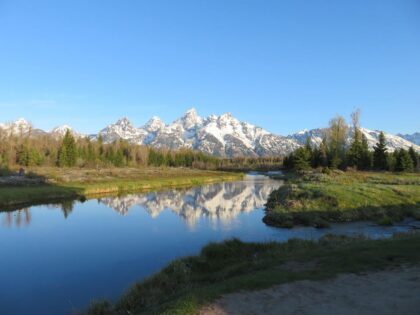What is the Dental Formula for a Child?
- How Many Teeth Do Children Have?
- When Will My Child’s Teeth Erupt?
- Second Graders and Reindeer: A Christmas Riddle
Has your kiddo been singing, “All I want for Christmas is my two front teeth”? If she’s tired of whistling her way through carols this holiday season, here’s a quick overview of the number and type of teeth children have and when you can expect them to come in. Read through to the end to find out why she may have the same thing on her Christmas list as Rudolph!
How Many Teeth Do Children Have?
Unlike adults who have thirty-two teeth in total, children only have twenty teeth. A full set of baby teeth includes two incisors, one canine, and two molars in each quadrant.
A dental formula is a way to express the number of teeth in a mammal. Most mammals have four types of teeth: incisors, canines, premolars, and molars. The numbers of the formula are written in that order for each quadrant, upper first and lower second: i.c.p.m./i.c.p.m. The full number of teeth will be twice that shown in the formula, since the formula only represents one upper and one lower quadrant.
Because children don’t have any premolars, their formula looks like this: 212/212. Adults, on the other hand, have two incisors, one canine, two premolars, and three molars in each quadrant. That makes the adult dental formula: 2123/2123.
When Will My Child’s Teeth Erupt?
If it seems like your baby has been teething non-stop, you’re probably right! There’s been a lot going on in his mouth. Taking a look at one quadrant of his teeth, here’s what’s been coming in:
The central incisors-front teeth-usually erupt between eight and twelve months. The lateral incisors-teeth just next to the central incisors-come in between twelve and twenty-four months. Canines appear between sixteen and twenty-four months. The first molars erupt between twelve and sixteen months. And the second molars-the molars furthest in the back-come in between twenty-four and thirty-two months.
By about three years of age, your child should have a full set of baby teeth. Poor baby, he’s had to do a lot of hard work in his first few years to get all of his teeth in!
For further reading: Why Do Kids Get Black Gums?
A Christmas Dental Riddle
Here’s your Christmas dental riddle for the season: how are second graders and reindeer alike?
Answer: Neither have their two front teeth!
Adult incisors don’t usually come in until children are seven or eight years old, and reindeer don’t have any front teeth on the top, just on the bottom, allowing them to more effectively pull up grass to eat. (Do you think Santa makes a pit stop at Camp Randall so the reindeer can nibble the turf?) So while your second grader and Rudolph might both be asking Santa for their two front teeth, Rudolph’s going to be out of luck.
Your second grader, though, should only have to wait a few months for her adult incisors to come in after the baby teeth have fallen out. If it’s been longer than six months, check in with your dentist to make sure there’s an adult tooth behind it and that it is able to descend properly.
Children’s Dentist in Madison, Wisconsin
If you have questions about your child’s teeth or would like to schedule an appointment, please contact us today. Affiliated Dentists offers pediatric dentistry in Madison, Wisconsin.
What is the Dental Formula for a Child? brought to you by Dr. Mark Gustavson


